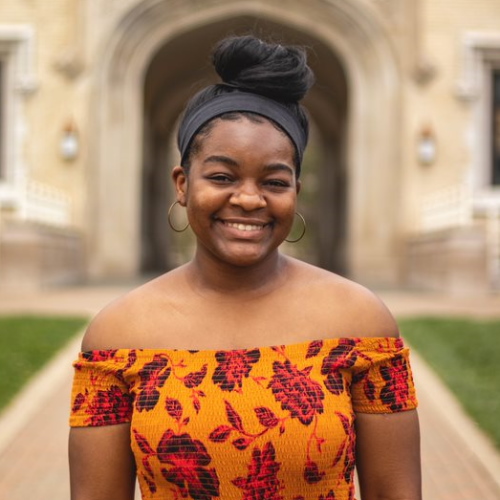
Analyzing the Other Race Effect through I.S. research

Major: cognitive behavioral neuroscience Mentor: Grit Herzmann, associate professor of psychology and neuroscience I.S. title: “Now you see me — now you don’t: An investigation of hair alteration effects on face identification in own and other race faces”
Maresa Taté spent her senior year studying the Other Race Effect, which is the tendency for people to more accurately recognize faces within their race, rather than outside of their race. Taté focused her research on how external features and hair alterations affect this perception. Taté was able to develop a plan with her faculty mentor that met her needs specifically. “I think the best thing about having that one-on-one mentoring experience is that I have the opportunity to learn from the best of the best, but also at my own pace and with my own style.” Showing her great ability to adapt, Taté had to completely change her I.S. topic when the COVID-19 pandemic hit. Her initial plan to study epilepsy in Cameroon, which has the highest epilepsy rates in the world, was quickly altered by travel restrictions. Neuroscience courses that Taté, a cognitive and behavioral neuroscience major, took her junior year helped her to easily adjust and develop this new topic.
To watch the videos that Taté made about her progress throughout her I.S. journey click here: Maresa Taté Episode One, Maresa Taté Episode Two, and Maresa Taté Episode Three.
Originally published in the summer 2021 issue of Wooster magazine.
Posted in Independent Study on June 21, 2021.
Related Posts
Related Areas of Study
Neuroscience
Psychology, chemistry, philosophy, computer science, and other disciplines combine in the study of the nervous system
Major

